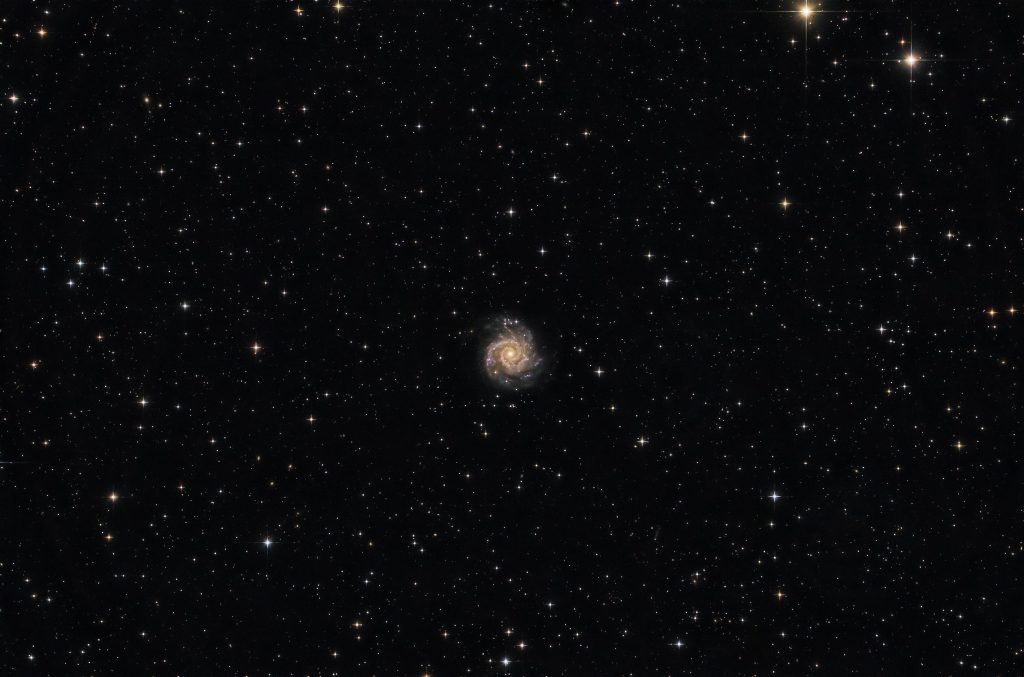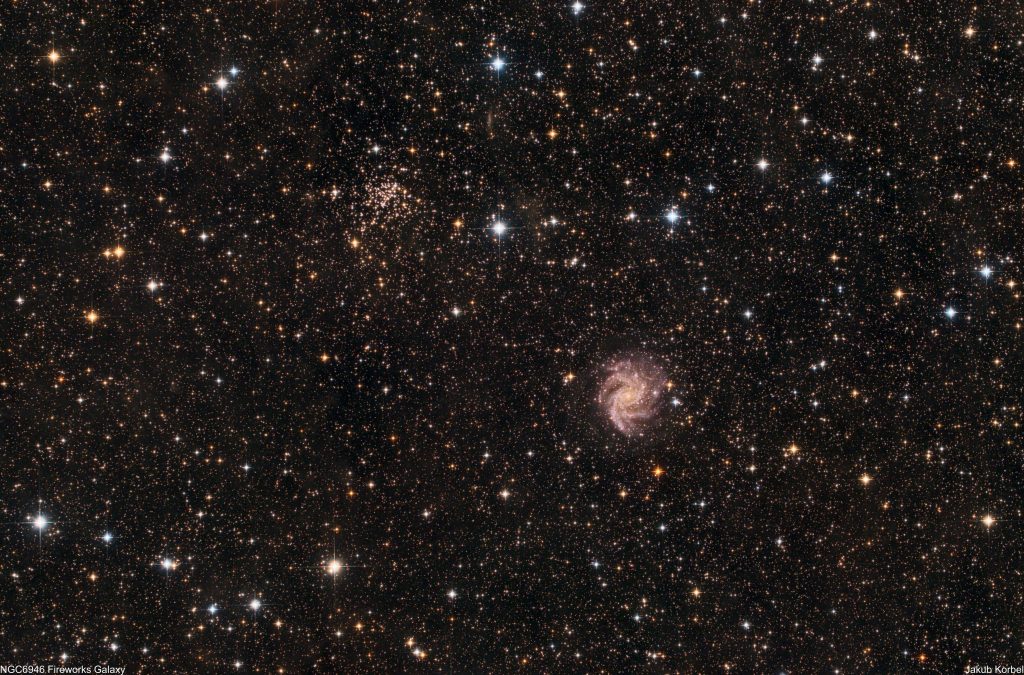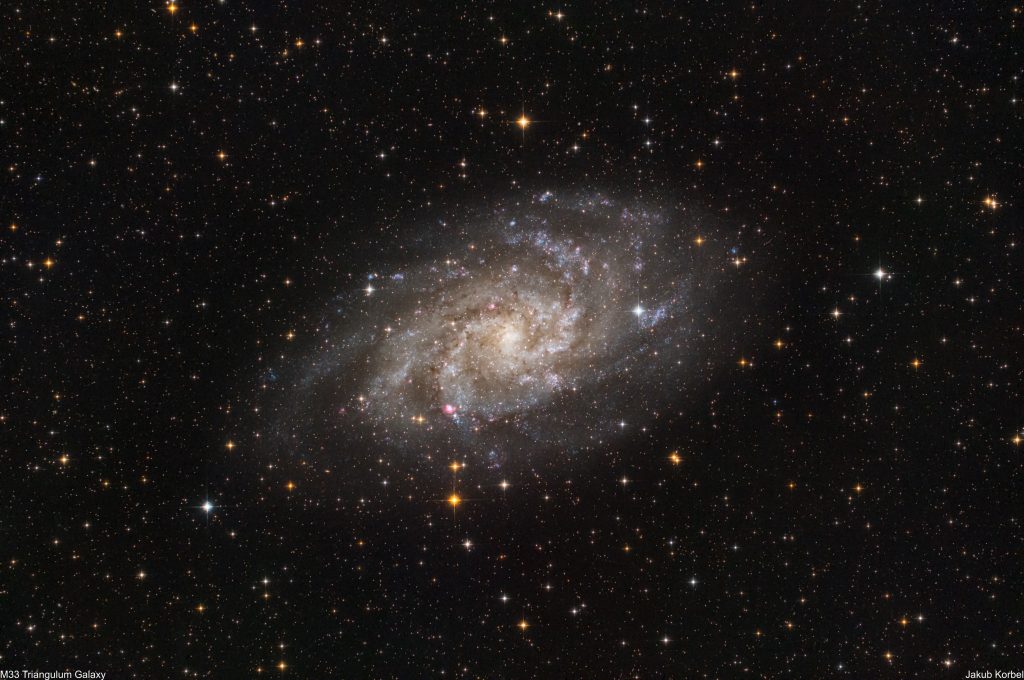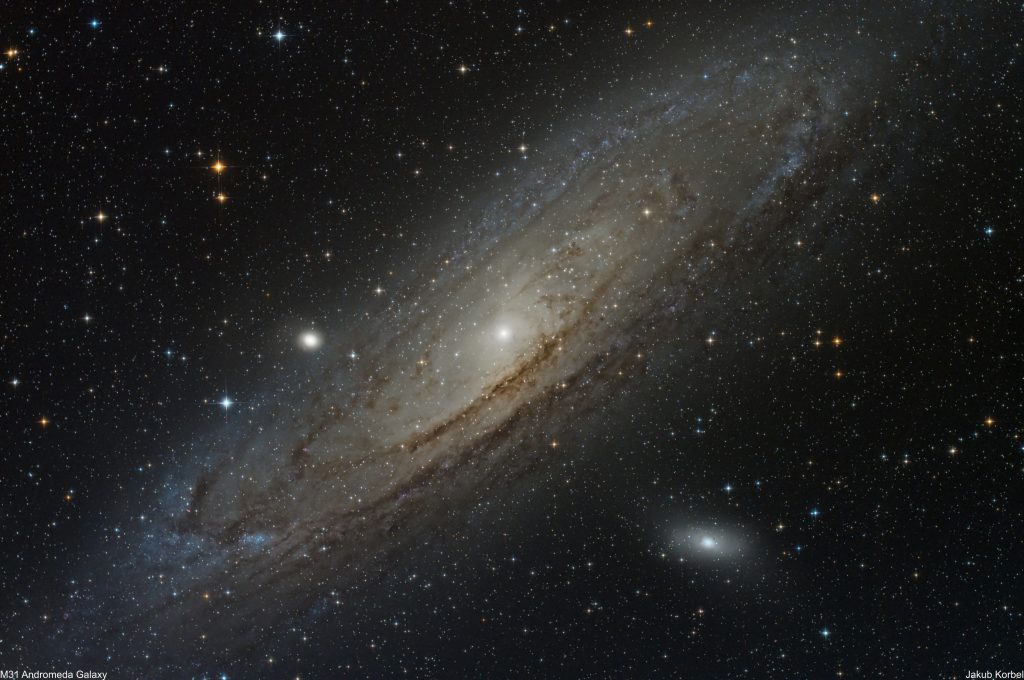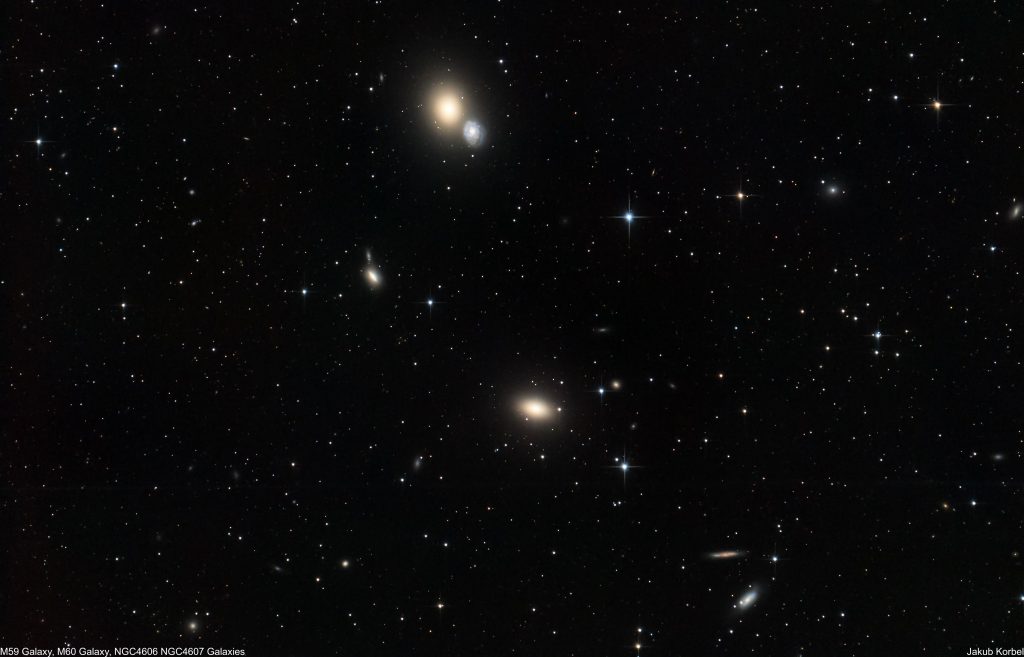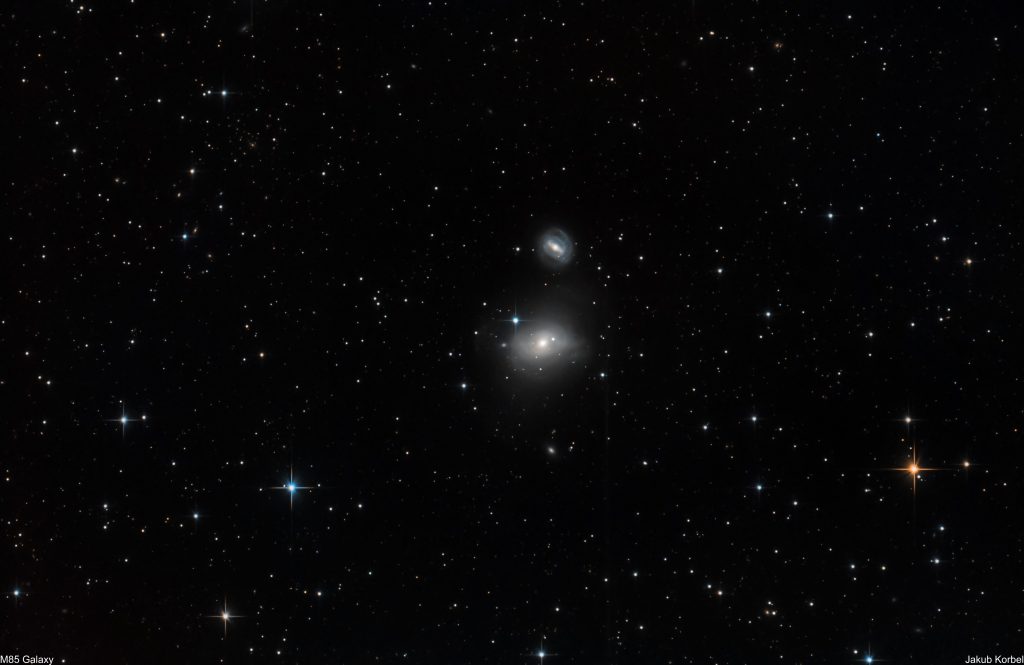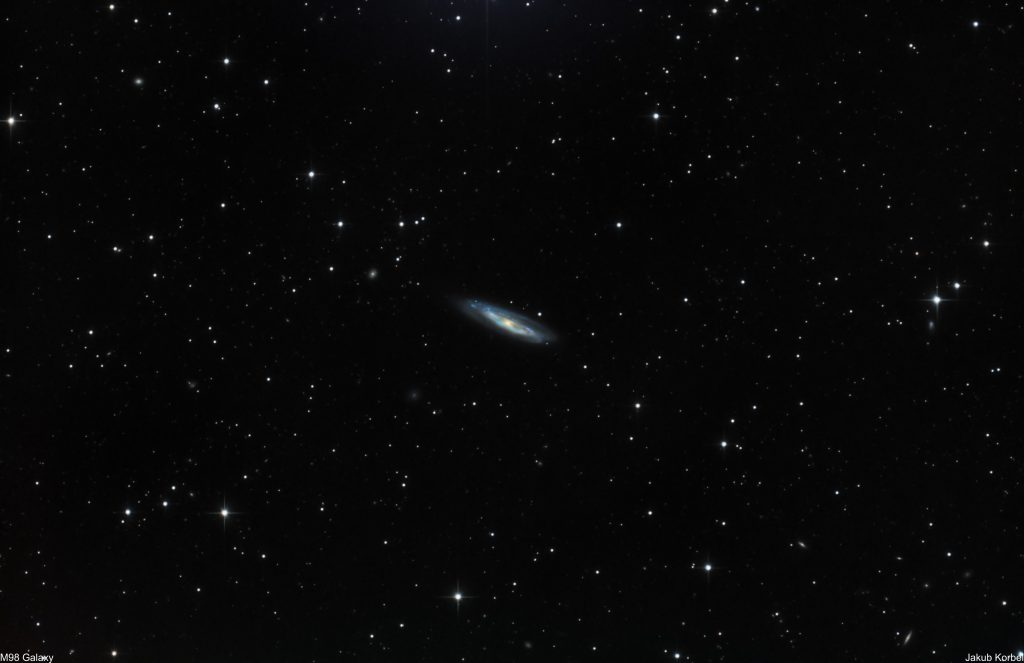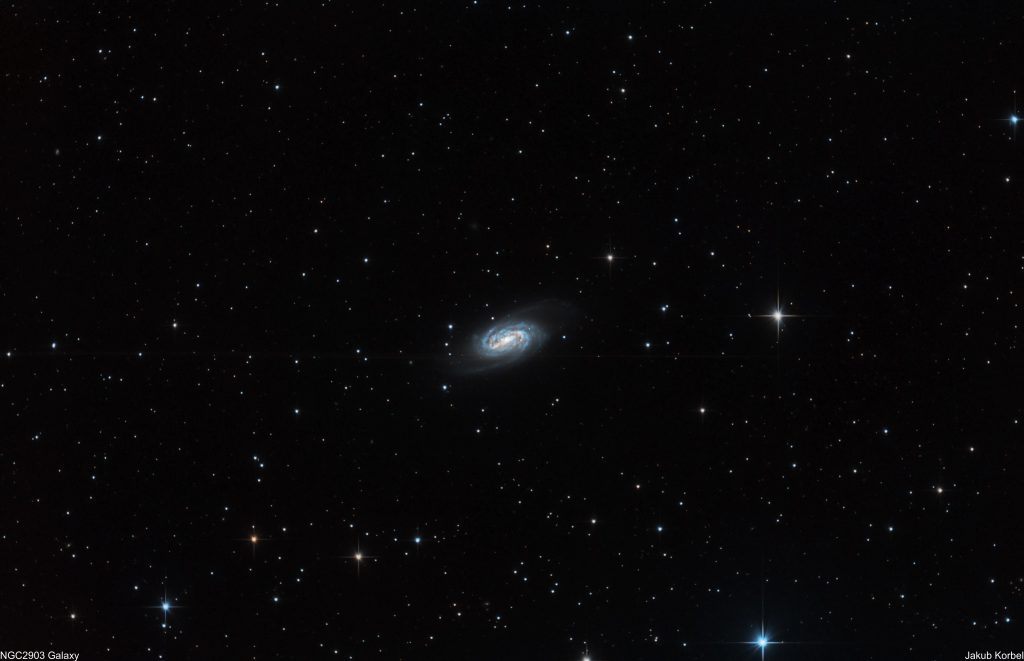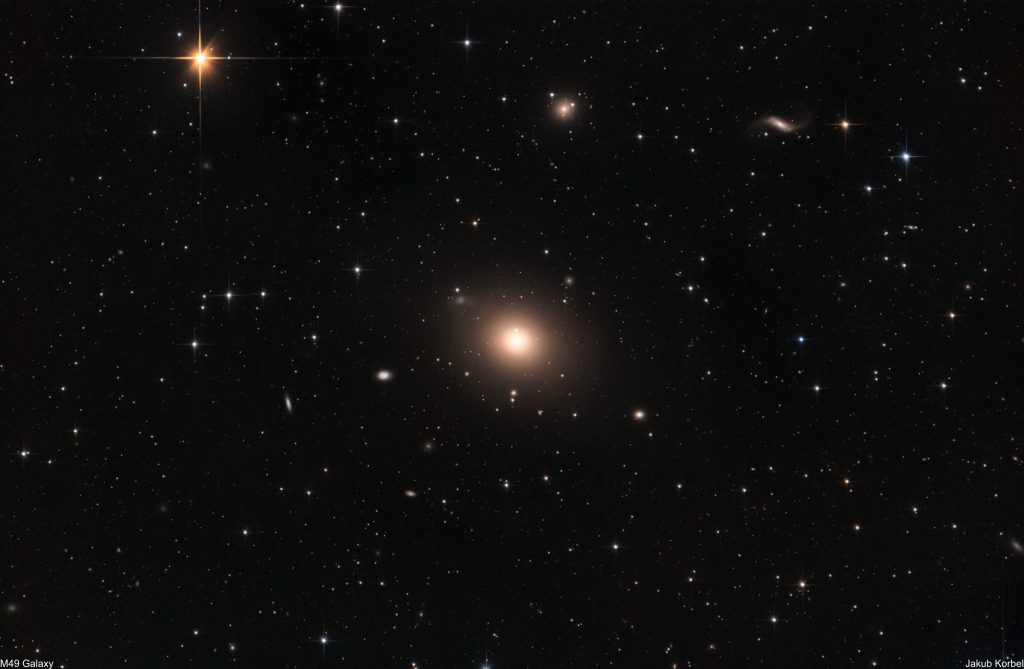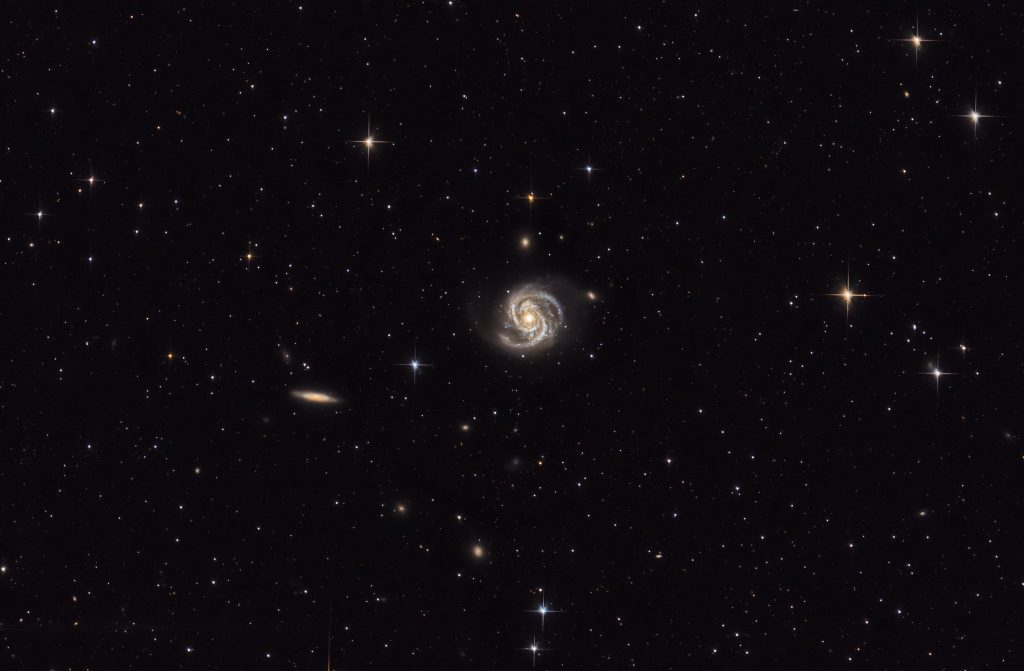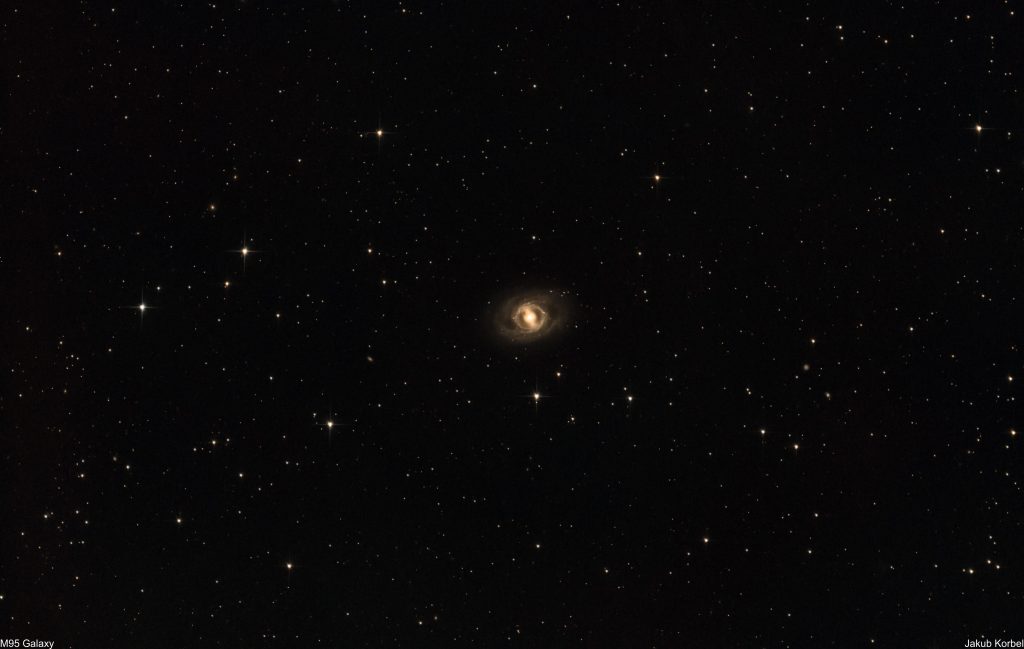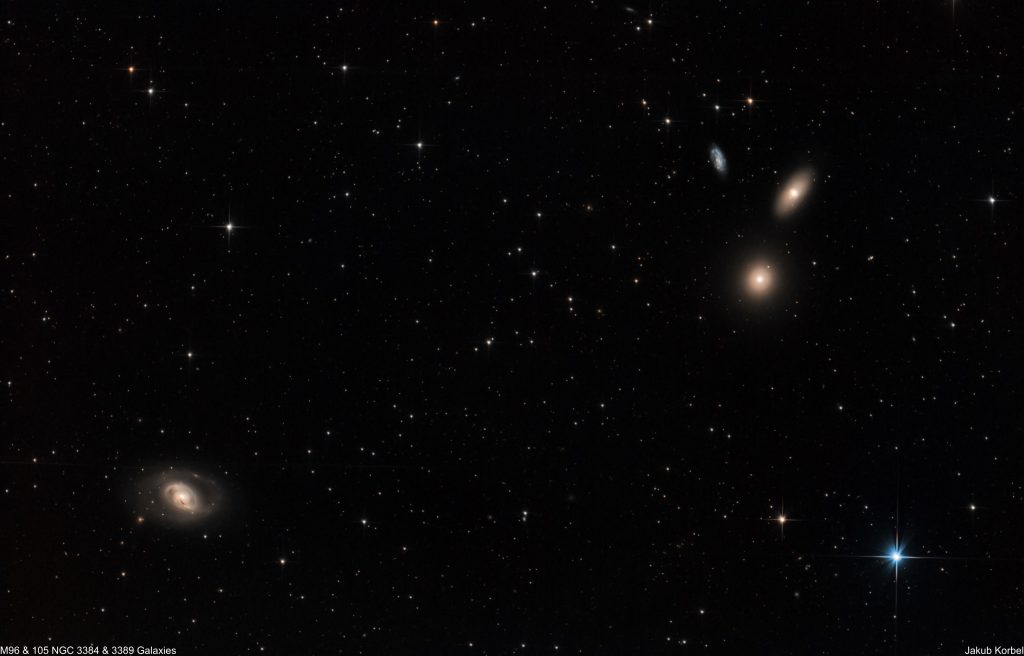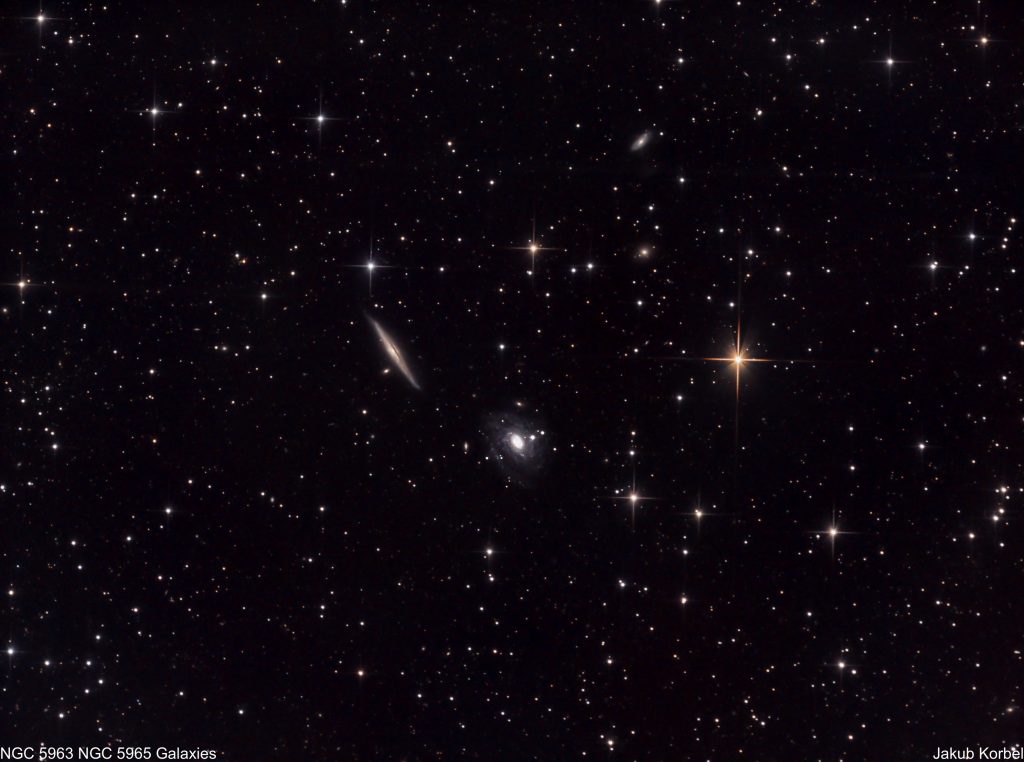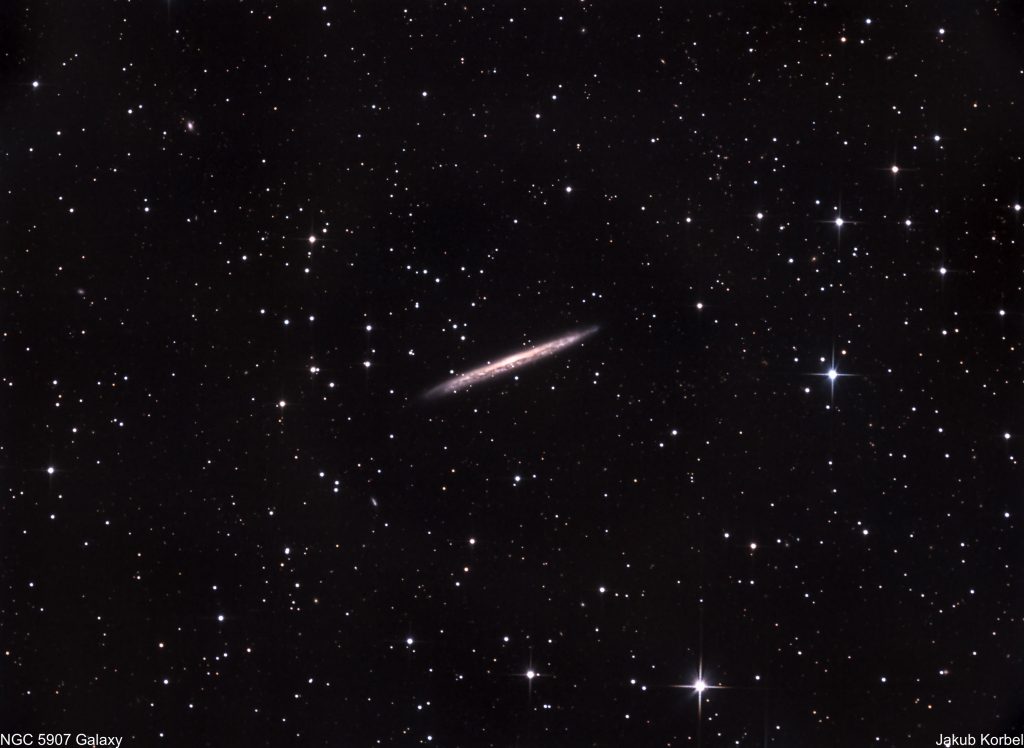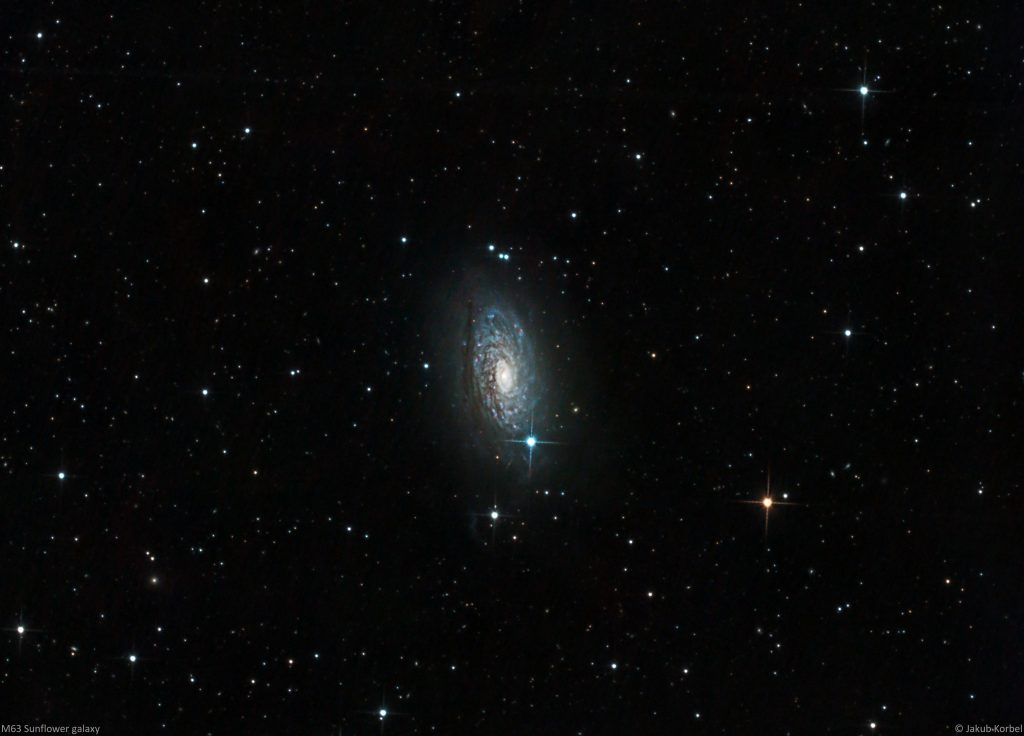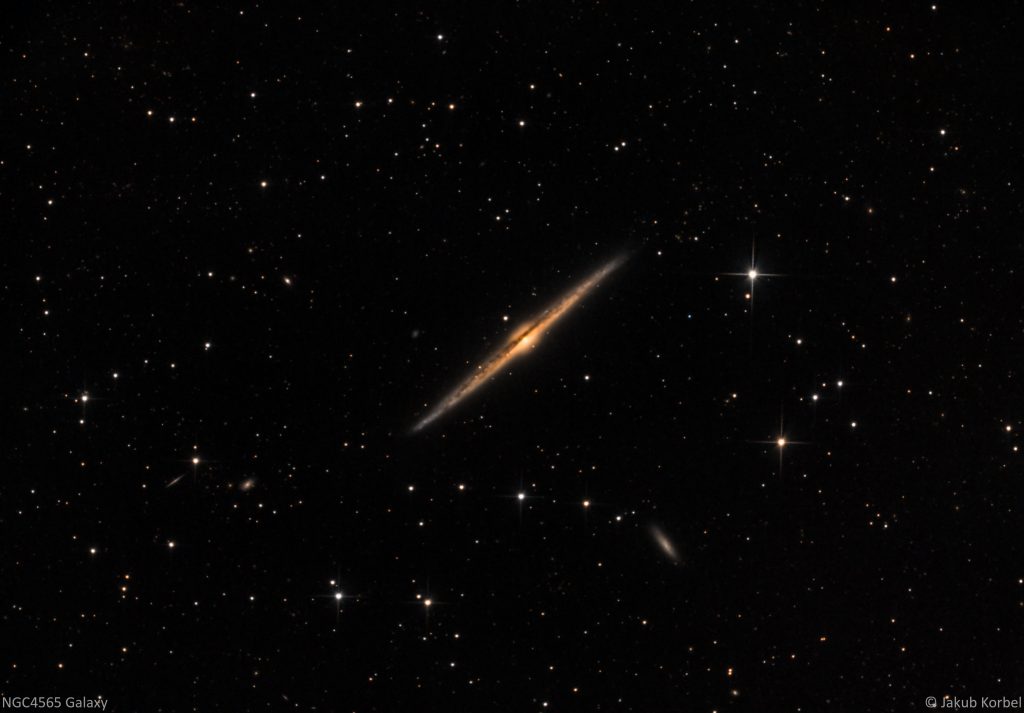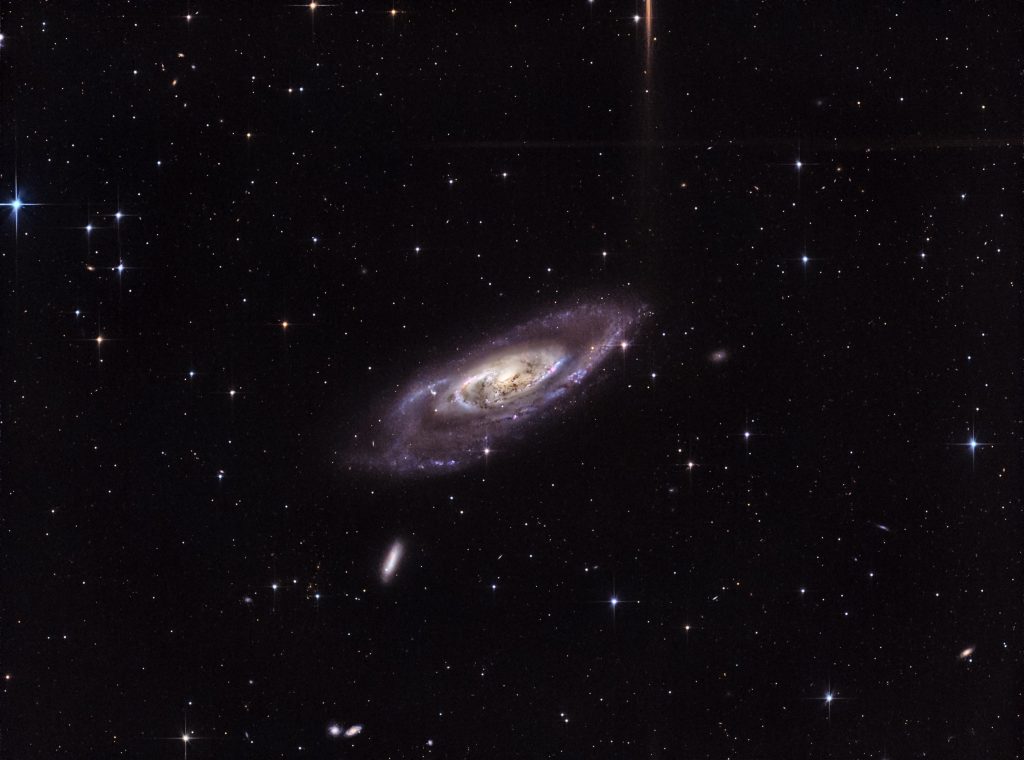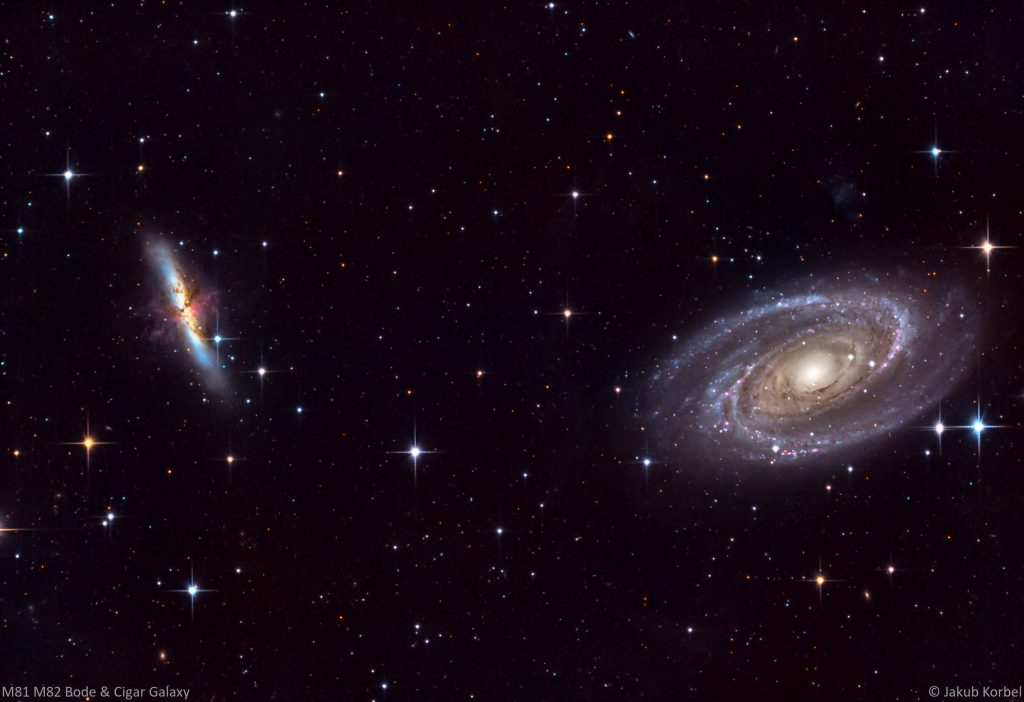Messier 77 is a spiral galaxy located in constellation Cetus and it is approximately 47 million light-year away from Earth. Due to its diameter 170 light-year, this galaxy is one of the biggest objects of Messier Catalogue.
The galaxy in the bottom right corner is called NGC 1055, which together with M77 creates binary system.
The picture is a stack of 20 pictures, each 3 minutes long, i.e. only one hour of integration time. This is obviously not enough for such deep space object, but I wanted to capture another DSO this night. Moreover, I was not able to wait till 1 o’clock, when the street lamps are switched off, because at this time, this galaxy was nearly reaching the horizon.
Now it’s time to slew to M78 Nebula.
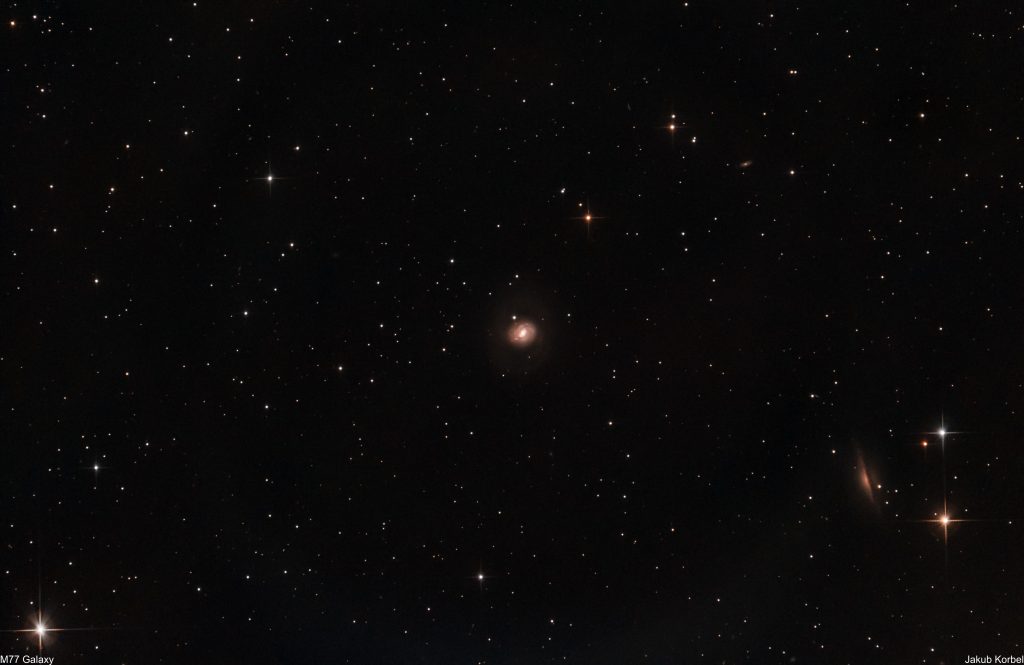
Technical details:
| Telescope | Newton 254/1000 mm |
| Aperture | 254 mm |
| Focal length | 1000 mm |
| Mount | Gemini G53f |
| Autoguiding | ZWO 174MM, TS 60/240 mm |
| Camera | ZWO 071 Pro @-20°C |
| Corrector | TS-Optics 2" 3-element MaxField |
| Filters | Hutech IDAS LPS-D2 |
| Exposure | 20x180s, Gain 94, bin 1x1, |
| Date | 2018-12-13 |

